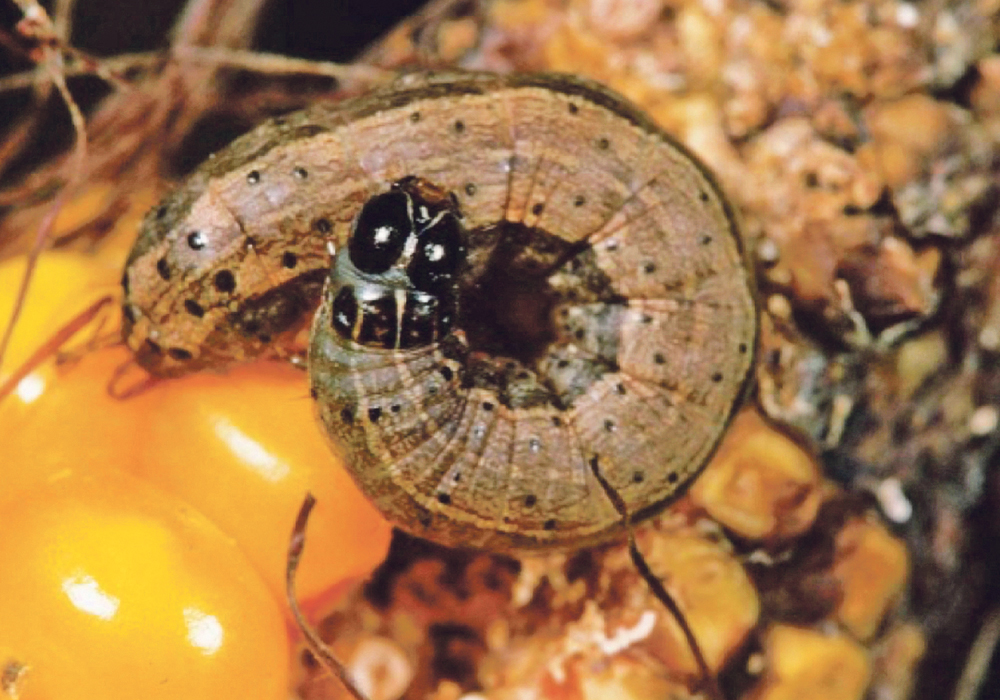Fall armyworm spreads across the country and could cause extensive damage or persuade farmers to grow other crops
A devastating pest is invading the world’s second largest corn producer.
The U.S. Department of Agriculture recently issued a special update report from its office in Beijing that said fall armyworm has been discovered in China.
The crop-eating pest was first detected in Yunnan province in January and has since rapidly spread across 15 provinces and 222,300 acres of farmland in southern China.
It feeds on more than 80 species of plants, but corn and sugar cane are the crops that have been most heavily affected in China.
Read Also

Pakistan reopens its doors to Canadian canola
Pakistan reopens its doors to Canadian canola after a three-year hiatus.
Chinese pest experts expect it will reach the North China Plain and northeastern China later this month. That is the country’s corn belt, where more than two-thirds of the crop is grown.
China is forecast to produce 254 million tonnes of corn in 2019-20, ranking second behind the 382 million tonnes forecast for the United States.
Dave Harwood, technical services manager with Corteva Agriscience, has witnessed fall armyworm infestations in corn fields in Brazil, Mexico and the southern U.S.
“It is quite a damaging pest of corn,” he said.
“It’s not to be dismissed as a rare, trivial pest.”
The insect recently caused extensive damage in Africa, South Asia and Southeast Asia, where corn yield losses were 20 to 50 percent, according to the USDA.
Harwood said it is more problematic than other larval insects, such as the European corn borer and western bean cutworm, because it reproduces several times in a growing season.
“You can imagine you’ve just got a lot of hungry larvae that just keep coming in waves,” he said.
Analysts have been predicting for years that China will eventually become a major corn importer, and that is gradually starting to happen.
China is forecast to import seven million tonnes of the crop in 2019-20, up from five million tonnes this year and 3.5 million tonnes the previous year.
That trend could accelerate if fall armyworms cause extensive damage or convince farmers to switch out of corn and into less susceptible crops.
Harwood said insecticides are the only way to effectively manage the pest.
However, there is a problem with that approach, according to the USDA report.
“It is important to note that most farmers in China do not have the financial resources and training needed to effectively manage (fall armyworm),” stated the report.
“Even if a (fall armyworm) mitigation program is employed, costly control measures (mainly chemical sprays) will drag producer margins into negative territory for farmers of most crops that could be affected.”
The other issue is that there are no pesticides registered to control fall armyworm in China. The government is conducting trials involving 20 pesticides and three spray aids.
The USDA report said it is difficult to assess production losses to China’s corn crop. It will partly depend on the monsoon season in September and October. Rainy weather has helped mitigate the spread and impact of the disease in South Asia and Southeast Asia.
The USDA predicts Chinese farmers are going to have to start using crop rotations as a tool to help manage the pest.
However, Harwood doubts that will be an effective management technique.
“The biology of this little critter is that they fly a long way,” he said.
“The moths are robust and can move a long distance.”
He has seen fall armyworm larvae in Des Moines, Iowa, from moths that overwintered in Mexico.
That is why crop rotation is not an effective solution: the moths will simply fly to a field where corn is being grown.
















